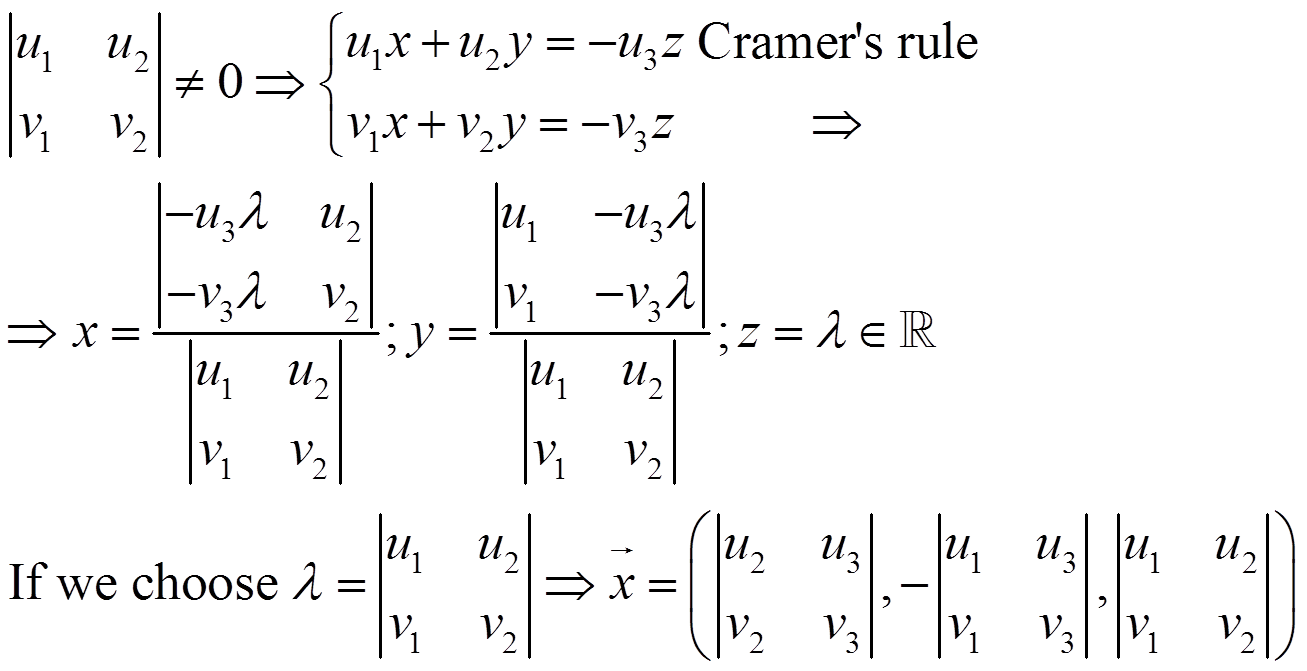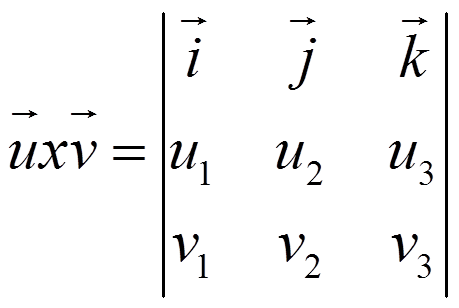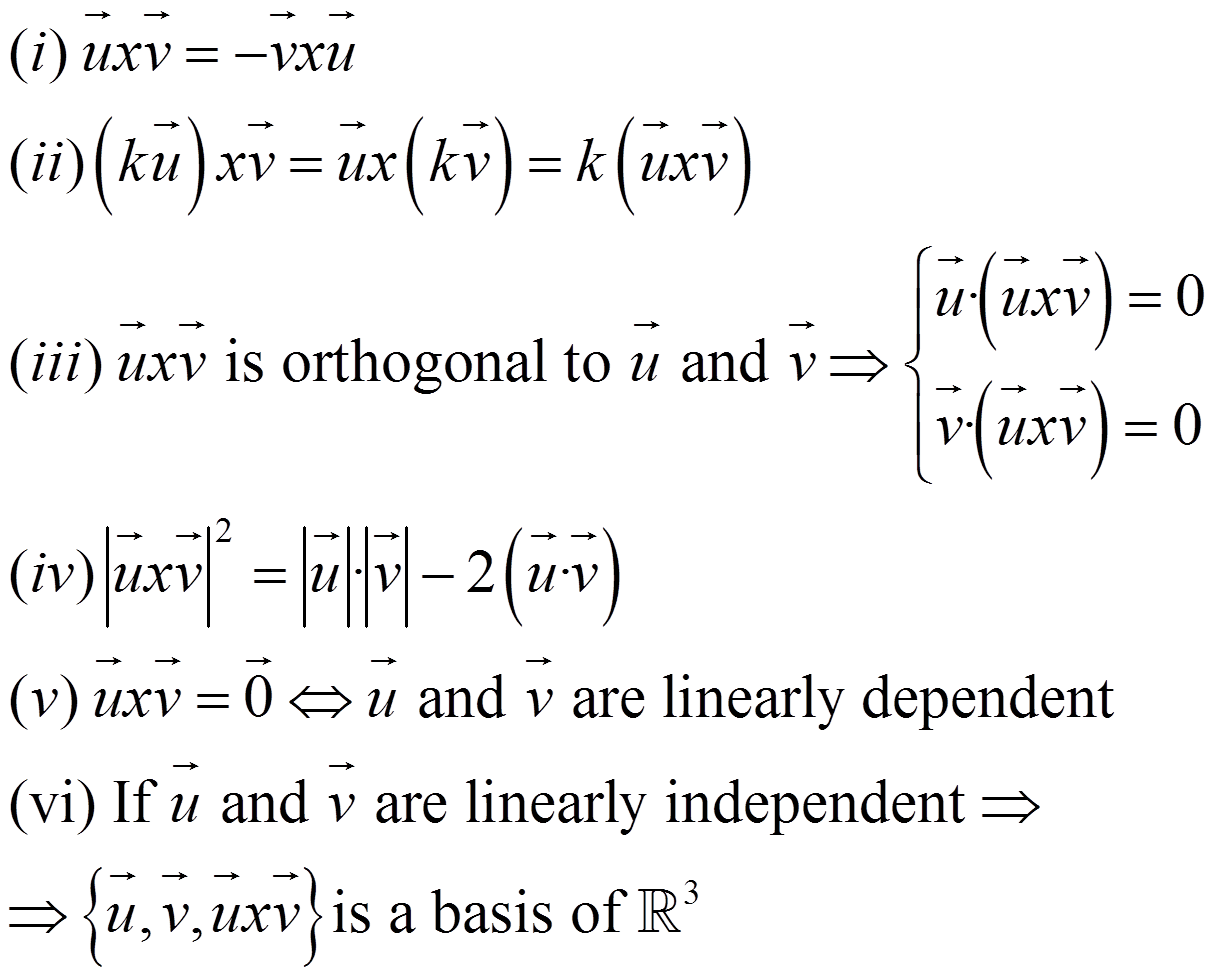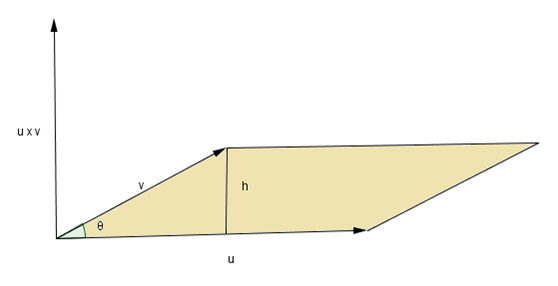VectorsInSpace
Vector product
Let u and v linearly independent vectors. How do we determine all the vectors that are orthogonal to both of them?

We can suppose that:

We name this vector
cross or vector product of u and v .
Then:

- Its magnitude is:
- Its direction is perpendicular to u and v.
- Its sense is determined by the “corkscrew rule” or “right-hand rule”

Properties:

(vii) The area of the parallelogram formed by u and v is the magnitude of its vector product.

Demonstration:
![]()
Exercise: Let A(1,1,1),B(2,-1,0),C(3,3,-2). Calculate:
a) ABxAC
b) A unit vector orthogonal to AB and AC
c) The area of the parallelogram defined by the vectors AB and AC
d) The area of the triangle ABC
Solutions: a) (-4,1,-2); b) (-4√21/21,√21/21,-2√21/21); c) √21u2; d) √21/2u2
Licensed under the Creative Commons Attribution Non-commercial Share Alike 3.0 License